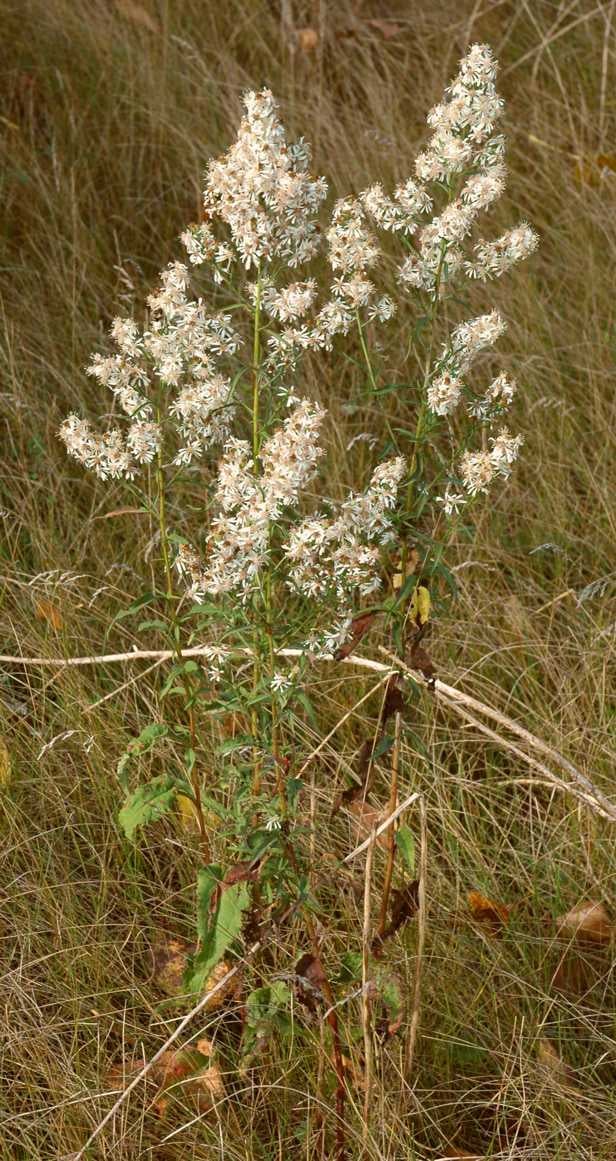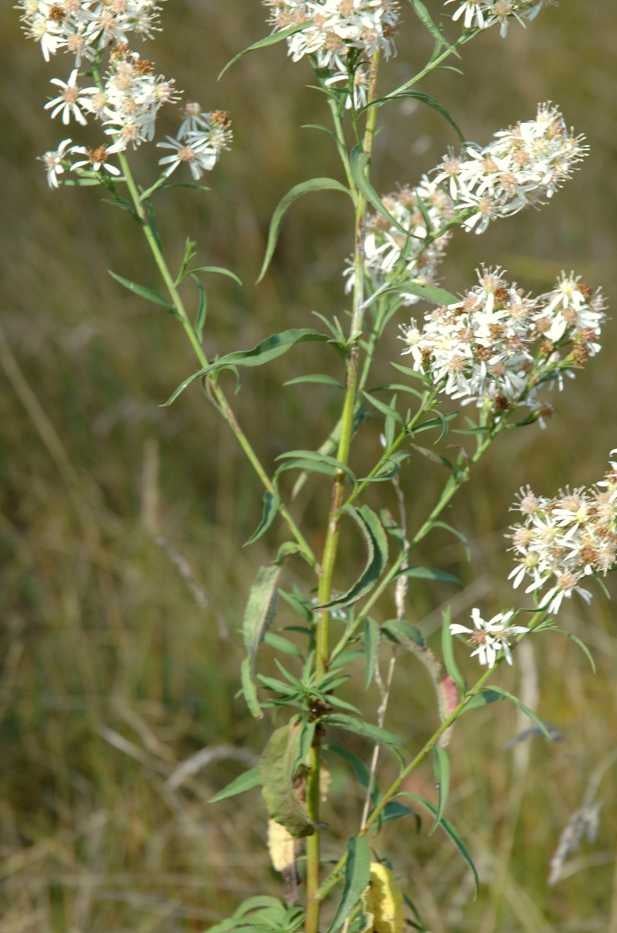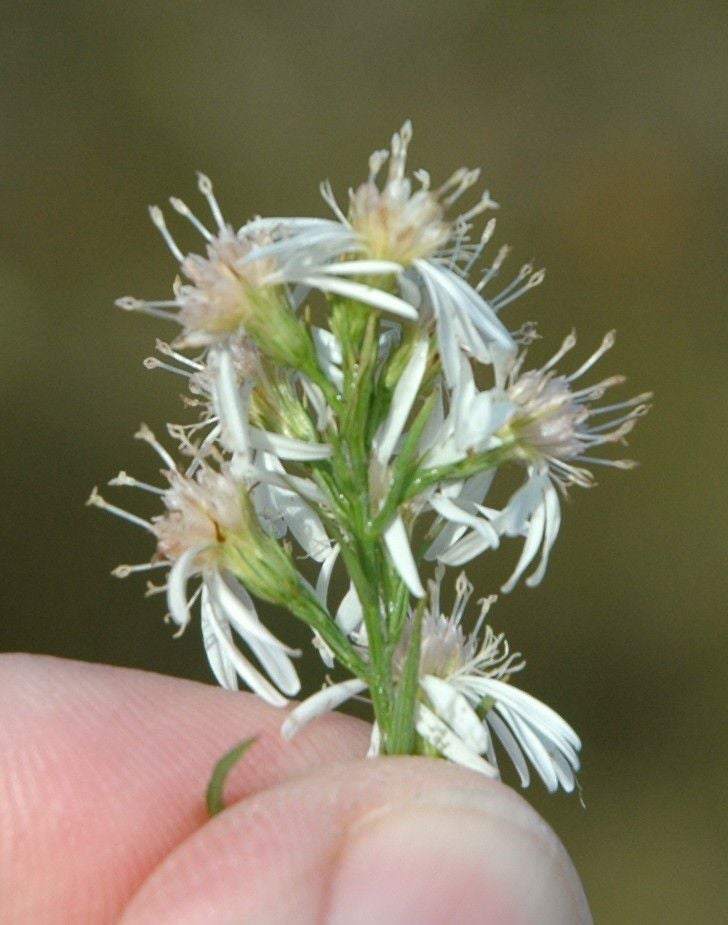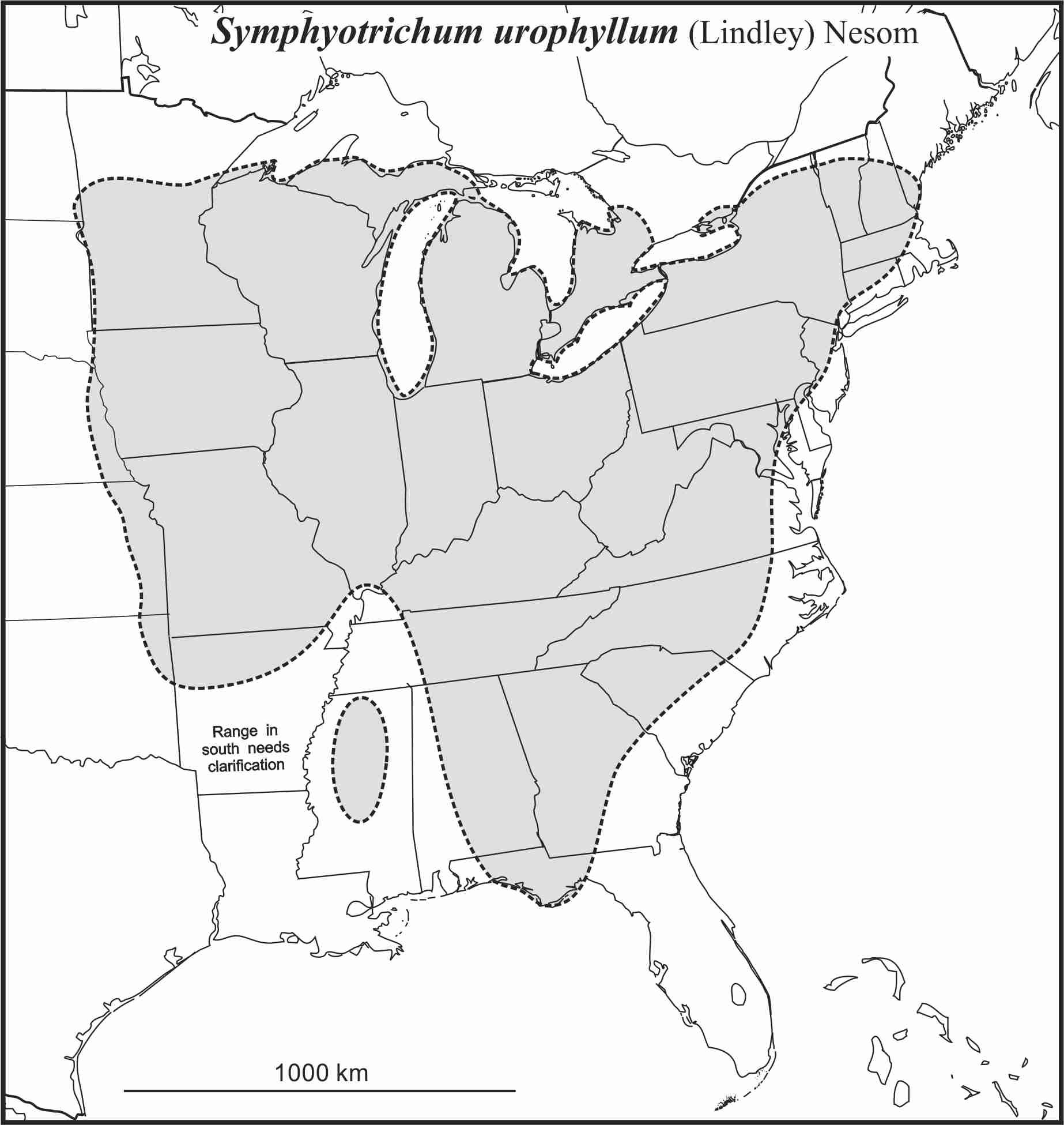White Arrowleaf Aster, Arrowleaf Aster
Symphyotrichum urophyllum (Lindley) Nesom is native to open, dry or mesic, sandy or loamy, sometimes rocky soils, limestone pavements, glades, ravines, open oak, sassafras, aspen, or pine woods, edges of woods, moist or dry, rocky bluffs, savanna, wooded banks, stabilized dunes, fields, roadsides, hedgerows, and along railroads in the eastern US and adjacent southern Ontario ranging from Maine to eastern South Dakota south to panhandle Florida and eastern Oklahoma (Brouillet et al. 2006; FNA). Stems are hairy in lines (at least distally); lower leaf blades usually shallowly to sometimes deeply; upper leaves ± shortly winged-petiolate or sessile;inflorescence branches stiffly ascending to erect; ray florets are mostly white to pale pink, lilac or light blue. The species is diploid (2n=16); reports for tetraploids (2n=32) under the name Aster sagittifolius are likely for S. cordifolium.
The name Aster sagittifolius Wedemeyer has been misapplied to this taxon because the type of this name is conspecific with the type of Symphyotrichum cordifolium or a garden hybrid involving the latter.
Brouillet, L., J.C. Semple, G.A. Allen, K. Chambers and S. Sundburg. 2006. Symphyotrichum Nees. pp. 465-539. In Flora North America Editorial Committee, eds. Flora of North America. Vol. 20. Asteraceae, Part 2. Astereae and Senecioneae. Oxford University Press, New York.
Last revised 13 May 2025 by J.C. Semple
© 2025 J.C. Semple, including all photographs unless otherwise indicated
1-4. Symphyotrichum urophyllum. 1-3. Glen Morris, Ontario. 1. Habit. 2. Inflorescence. 3. Heads. 4. Range map draft JCS.







